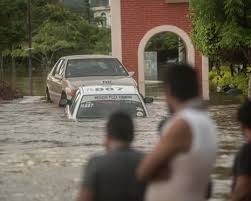
The Importance of Addressing Flooding in Mexico
Flooding is a recurring natural disaster that significantly impacts communities across Mexico. Understanding the recent floods that have affected several regions is crucial as it highlights not only the immediate dangers posed by severe weather but also the longer-term implications for infrastructure and public safety. As climate change continues to exacerbate weather-related events, it is essential to stay informed on the developments related to flooding in Mexico.
Recent Events and Affected Areas
In September 2023, Mexico experienced severe flooding, particularly in the states of Guerrero, Puebla, and Veracruz. Torrential rains, attributed to the remnants of Hurricane Lidia, inundated cities, leading to significant damage. Reports indicated that up to 200 millimeters of rain fell in some areas, overwhelming drainage systems and causing rivers to overflow. Emergency services reported multiple rescue operations where residents were stranded on rooftops or trapped in vehicles. Local authorities declared states of emergency in the hardest-hit regions, enabling quicker mobilization of resources and support.
Government and Community Response
The Mexican government, alongside various NGOs, mobilized rapidly to provide relief to those affected. Emergency shelters were established, offering refuge and essential supplies, such as food, clothing, and medical assistance. The Ministry of the Interior coordinated efforts with state authorities to restore services and repair infrastructure damaged by the flooding. As communities began to recover from this crisis, discussions about improving disaster preparedness and response mechanisms gained momentum. Assessments of previous flooding incidents also guided the planning for future resilience measures.
Long-Term Implications and Future Outlook
While immediate response efforts are critical, the flooding crisis highlights the need for long-term strategies to mitigate flooding risks in Mexico. Urban planning must consider climate resilience, including improved drainage systems and flood defenses. Experts suggest that investment in green infrastructure and improved land-use practices can significantly reduce future flood impacts. Additionally, raising public awareness about disaster preparedness remains vital as climate events become more frequent.
Conclusion
The flooding in Mexico serves as a poignant reminder of the power of nature and the importance of community resilience. As recovery efforts continue, it remains imperative for local and national authorities to focus on sustainable solutions that not only address the aftermath of flooding but also enhance future preparedness. By learning from these incidents, Mexico can work towards a safer and more resilient future for all its citizens.

